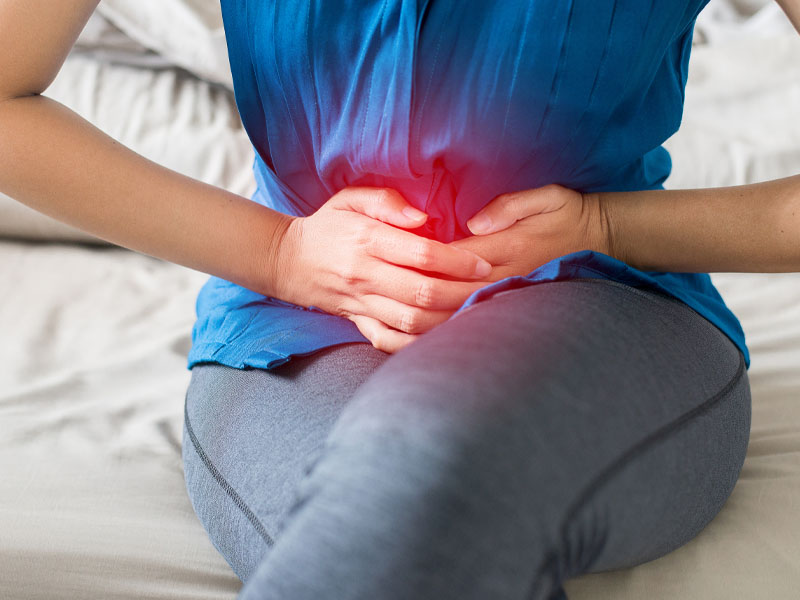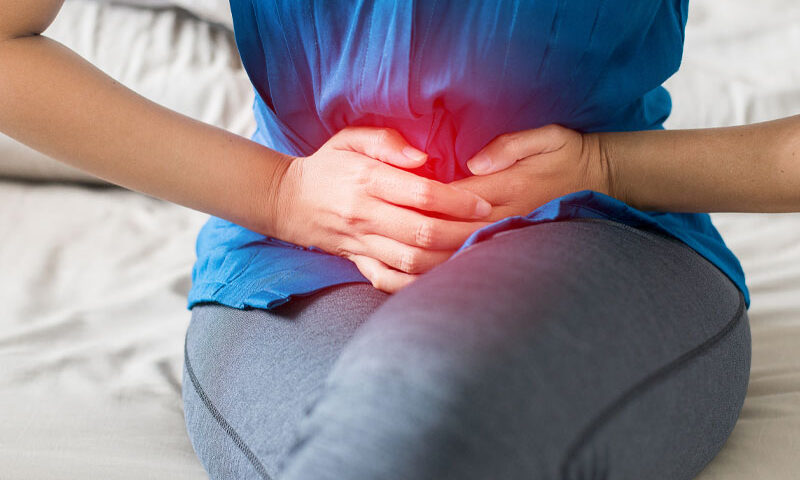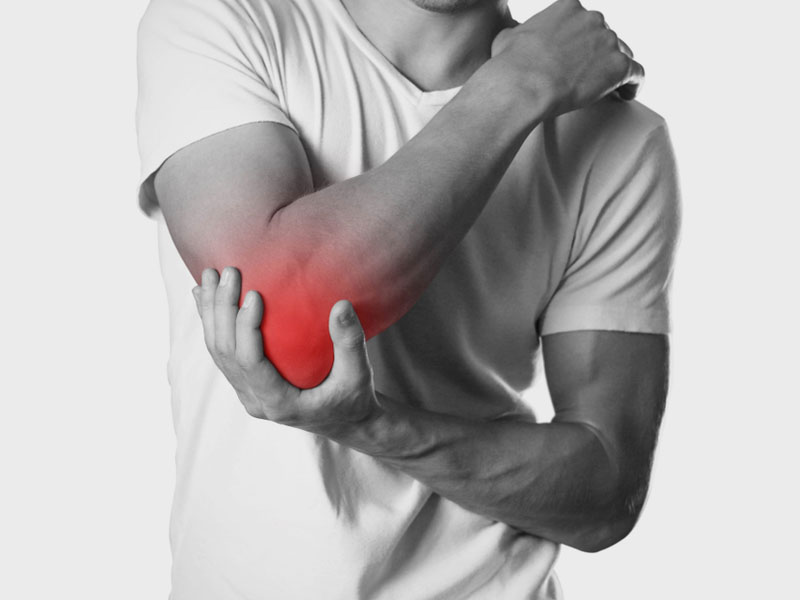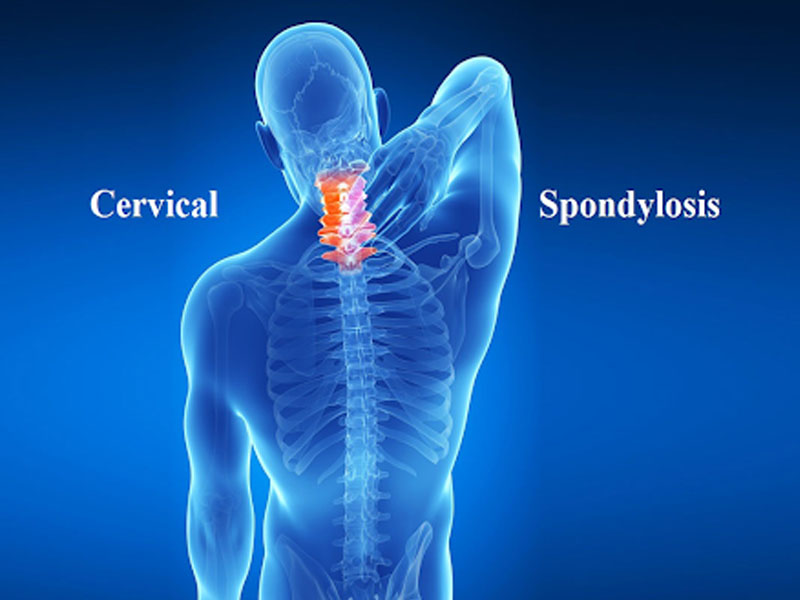Dysmenorrhea

Dysmenorrhea is the term used to described Painful Period, Normal Ovulatory Menstruation can be painful, but when it affects one’s routine life, for example absence in the School or the Office or unable to do day to day activities, it has to be investigated and treated. Women of any age can experience painful periods; some women find period are no longer painful after Pregnancy and Childbirth.
Dysmenorrhea is Menstrual cramps refers to the pain during menstruation, specifically in area of Lower Abdomen, involves contraction of Uterine Walls, which may lead to the blockage of Blood Vessels, Tissue deaths and hence, cause pain in the Lower Abdomen. Many women experiences cramps just before or during the Menstrual period, these cramps may also be caused by an underlying condition Endometritis, Uterine Fibroid or Adenomyosis for which a diagnose has to be made post the relevant investigations, these cramps are transient and are associated with the Hormonal Changes during Menstruation.
Dysmenorrhoea can be associated with…….
- Nausea and Vomiting
- Headache
- Digestive Problems
- Fainting
- Premenstrual Symptoms, Such as Tender Breasts
Causes and Risk Factor of Dysmenorrhoea…….
- Age – Dysmenorrhoea is more seen in women after the age of 40 Years.
- Underlying Condition – Dysmenorrhea can be either primary or secondary based on the presence of an underlying cause. Some of the underlying conditions that cause secondary dysmenorrhea are leiomyoma, adenomyosis, ovarian cysts, and pelvic congestion.
- Early Puberty – The females who hit the puberty at early age of 11 years or even younger.
- Medical Condition – Heavy bleeding during periods (Menorrhagia), Irregular menstrual bleeding (Metrorrhagia) also contributes to dysmenorrhea.
- Skeletal Abnormalities – Some skeletal abnormalities like scoliosis also contribute to dysmenorrhea
Common Symptom’s like ……
- Nausea, Vomiting and Fainting
- Stomach Cramps or Pain, Painful Lower Abdomen or Pelvis( Mostly during period due to narrowing of Cervix with stricture or Hormonal Problem or clots in menses also create this type of pain, also called this situation Spasmodic Dysmenorrhoea)
- Headache, Giddiness
- Extreme case of Dysmenorrhoea where patient can see the disintegrated membrane of uterus in Bleeding which may be due to chronic inflammation (This is rare and immediate medical attention is needed in this case, called as Membranous Dysmenorrhoea)
- Constipation, Anorexia, Altered Bowel Habits like Diarrhoea or Constipation
- Frequent Urination
- Heart Palpitation and Sweating can also occur due to Anxiety and Hormonal Changes
- Heavy Bleeding Periods
- Premenstrual Symptoms like Heaviness, Fullness and Painfulness of Breast or Abdomen may occur before or during the period (Condition also called as Congestive Dysmenorrhoea)
- Pain occur after an unpleasant sexual activity or lack of sexual knowledge, this type of pain usually neurological, called as Psychogenic Dysmenorrhoea.
Types of Dysmenorrhoea
Generally, there is two type of Dysmenorrhoea,
- Primary Dysmenorrhoea
- Secondary Dysmenorrhoea
Primary Dysmenorrhoea –
Normal menstruation that happens to be painful is known as primary Dysmenorrhea. In primary Dysmenorrhoea, it is thought that the muscles of the uterus contract harder than normal to excrete the thickened lining (Endometrium). These contractions may also reduce blood flow to the uterus which makes the pain worse. The hormone-like compounds that prompt these contractions are prostaglandins. The reason for the increased prostaglandins is not known. This type of Dysmenorrhea diminishes with age. It is mostly seen in the adolescent period due to low pain threshold, tension and anxiety.
Secondary Dysmenorrhoea
It happens due to specific Medical condition as –
- Endometriosis
- Adenomyosis
- Pelvic Inflammatory Disease
- Ovarian Cysts
- Fibroid of Uterus
Ayurvedic Concept with Management
- According to Ayurveda, ‘Apana Vayu’ (One of 5 type of ‘Vata dosha’ or subtype of ‘Vata Dosha’, present in the body, classified as per their functions) control the Menstruation. Factor which causes Dysmenorrhoea, provokes the ‘Apana Vata or Vayu’ and its disturbed the natural route of a downward direction and make it to move in reverse and upward direction. The change in direction of Vata Dosha alters the Menstrual Blood Flows.
- As another theory, Ayurveda believes its most common in PID(Pelvic Inflammatory Disease), Its stated that when there is Vitiation of Vata Dosha, instead of proper direction, The Apana Vayu work in opposite direction, so as reproductive organ are under influence of the Apana Vayu, there is colicky pain( Note- In Ayurveda, Vayu vitiation means Pain) and discharge is thrown out with difficulties and become frothy. Position of Uterus is become distorted due to faulty position and excessive coital act. The mouth of Uterus become curved and it fall back which is responsible for painful menstruation and painful intercourse. When along Vata, Pitta Dosha also vitiated there will symptoms like Chronic Backache, Painful Menses, Painful Intercourse and Excessive Bleeding during period, this situation correlated with PID.
- In Ayur Healthcare, the qualified and Highly experienced Practitioners stated that Dysmenorrhoea may be seen in many women without any underlying disease. For diagnosis of severe condition, a detailed Medical History is obtained here and a physical examination is undertaken, if any abnormality is suspected Tests suggest included Ultrasound of Abdomen, Imaging Test like CAT or MRI (Magnetic Resonance Imaging) study of Abdomen.
- Ayurvedic management is mainly based on correction of Apana Vayu vitiation, the site of Apana Vata is last part of intestine. Ayur Healthcare provide the Classical Treatment which is explained in Ayurvedic Scripture, I.e Panchakarma (Five Action)
- Snehana – Oleation Therapy, Massage with medicated Oil or Ghee, (Shatawari Ghrit, Sesame Oil), Hot Water Bag Fomentation (Nadi Sweda), Highly helpful in Painful conditions
- Virechana – Medicated Purgation Therapy, use of Laxative like Gandharva Haritaki.
- Basti – Basti is Anema Therapy, Its best treatment for the vitiation of Vata Dosha, like Uttar Basti with Bala Taila, Decoction Basti and Matrabasti etc.
Ayur Healthcare provide proper screening of patient, personalised herbal medication like Herbal medicine preparation like Yograj Guggulu, Maharasnaadi Kashyaya, Dashmool Kwath, Ashokarishta etc are the best treatment of Dysmenorrhoea and provide the knowledge of Diet and Lifestyle advice as per disease condition. Important precaution measures should be taken as-
- Yoga, Pranayam, Meditation, Exercise
- Tea, Coffee, Alcohol, Aerated Drinks and Non -Vegetarian food should be avoided.
- Increase intake of Fruit, Green Vegetable and Salad




